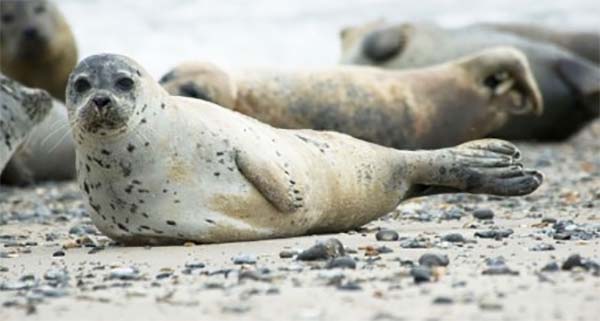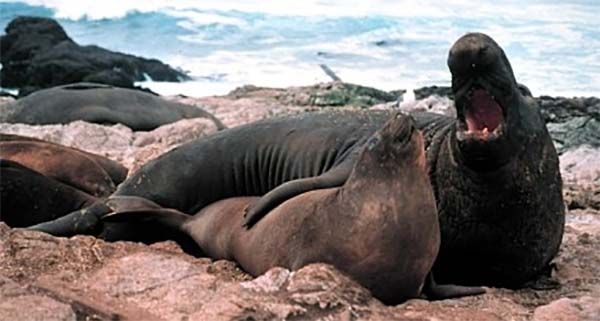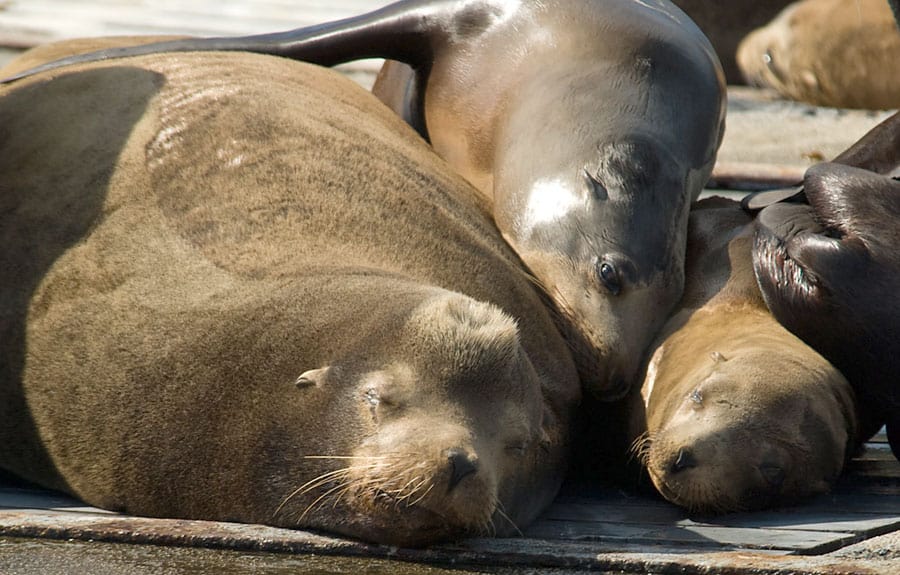the Seal Family – Pinnipeds
Pinniped is the official classification that includes the 33 types of seals, sea lions and walruses of the marine mammal family. The name Pinniped comes from the Latin ‘pinpedia’ meaning “feather finned foot” for their distinct “webbed feet” or flippers.
San Diego is home to two species of “true” seals and the California Sea Lion is a common sight around the beautiful and safe waterways for the cute and curious creatures. Pacific Harbor Seals can be spotted year round along the San Diego and California coastline since they do not migrate. Elephant Seals are more commonly found near Año Nuevo State Beach in Central California where they breed each year.
Pacific Harbor Seal

Found in small groups, you can often see them lying around resting and sunning on the beaches. As with all seals, there is no ear flap – a distinctive feature to let you know you are viewing a seal.
Female Harbor Seals give birth each year in March or April. Pups are able to swim and dive within hours of birth, developing quickly on their mothers’ fat-rich milk. Pacific Harbor Seals can live to 30 years of age. The global populations is between 5-6 million.
Elephant Seal

Elephant Seals are “true” seals in that they do not have external ear flaps. Many people are familiar with them because of their unique prominent large nose and sometimes aggressive nature.
In 1892, only 50 to 100 Elephant Seals survived massive slaughter for the harvesting of oil from their blubber.
Thanks to the Marine Mammal Protection Act, at least 124,000 swim in the coastal California waters today.
California Sea Lion

The California Sea Lion is a common sight in San Diego’s waterways, yet they are found all the way north from Vancouver Island, British Columbia all the way to the southern tip of Baja, Mexico. Their color ranges from rich chocolate brown in males to a lighter, golden brown in females. The males can weigh in at around 1000 lbs, but the females are much smaller at around 200 lbs. The California Sea Lion is considered not a “true” seal because it has external ear flaps, which “true” seals do not. With their puppy dog faces and large flippers that they use to “walk” on, they are social and vocal mammals very comfortable on land. Due to their gentle nature and high intelligence, the California Sea Lion is commonly trained for exhibition in zoos and aquariums across the globe.
They give birth in June or July and can nurse their babies for up to a year. They feed on squid, octopus, herring, rockfish, mackerel, and small sharks. In turn, sea lions are preyed upon by Orcas (killer whales) and great white sharks, yet their population is stable and thriving.
San Diego Whale Watching – Whale Watching Charters – Whale Watching Tours
San Diego Cetacean Charters – San Diego Cetacean Watching – San Diego Cetacean Tours
